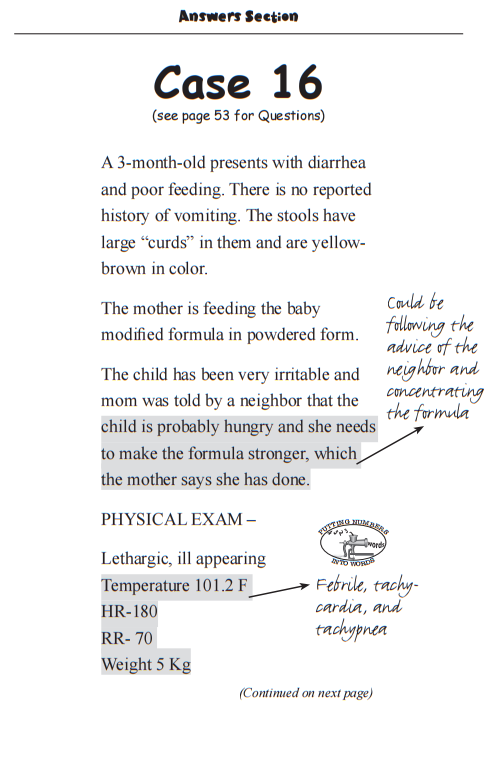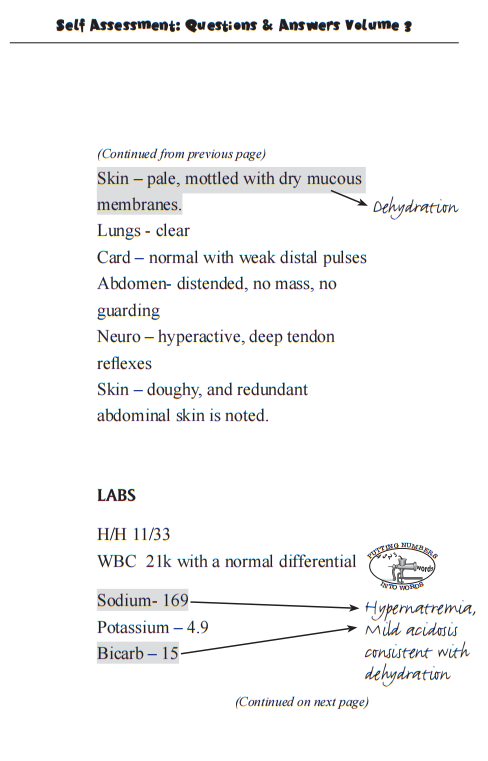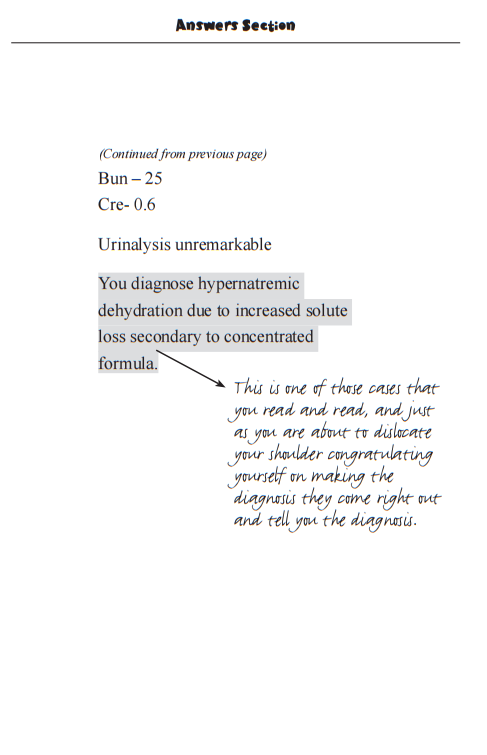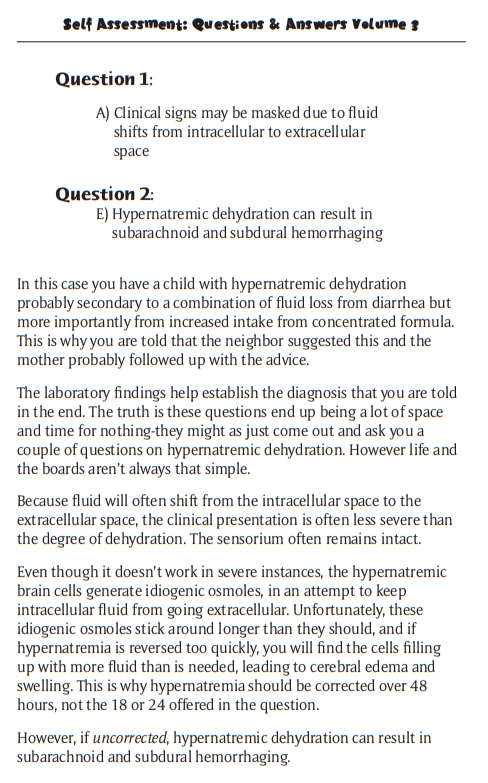Sample Question on Hypernatremic dehydration How to Instantly Recognize it on the Exam !
Posted by Stuart C. Silverstein, MD Laughing Your Way to Passing the Pediatric Boards on Jan 17th 2024
Pediatric Sample Question on Hypernatremic dehydration
Hypernatremic dehydration can be a challenging concept on the pediatric board exam. However, there are a limited ways in which it can be represented. Understanding this will guarantee points on the exam. It is an important concept and one that will be tested on any pediatric exam, whether it is the Pediatric ITE , Pediatric Shelf or even Pediatric MOCA exam.
The following is an example of such a question and how to approach it for easy recognition. This is excerpted from our Laughing Your Way to Passing the Pediatric Boards : Clinical Vignettes and soon to be included in our Laughing Your Way to the Pediatric Question Bank
Breaking the Question Down for Easy Recognition of what is being tested
Here is the question as it might appear on the exam. Once you read it through we provide you with our proven method on how to break the question down for easy recognition on the boards.
- We first provide you with a case scenario followed by a series of question.
- In the answer section we provide the case scenario in highlighted format with margin notes indicated the significance of the highlighted material.
- This illustrates a systematic approach to case scenarios with a proven track record. This is followed by the correct answers and a narrative explanation for these answers.
A 3-month-old presents with diarrhea and poor feeding. There is no reported history of vomiting. The stools have large “curds” in them and are yellow brown in color.
The mother is feeding the baby modified formula in powdered form. The child has been very irritable and mom was told by a neighbor that the child is probably hungry and she needs to make the formula stronger, which the mother says she has done.
PHYSICAL EXAM – Lethargic, ill appearing
Temperature 101.2 F
HR-180
RR- 70
Weight 5 Kg
Skin – pale, mottled with dry mucous membranes.
Lungs - clear
Card – normal with weak distal pulses
Abdomen- distended, no mass, no guarding
Neuro – hyperactive, deep tendon reflexes
Skin – doughy, and redundant abdominal skin is noted.
LABS
H/H 11/33
WBC 21k with a normal differential
Sodium- 169
Potassium – 4.9
Bicarb – 15
Bun – 25
Cre- 0.6
Urinalysis unremarkable
You diagnose hypernatremic dehydration due to increased solute loss secondary to concentrated formula.
Question 1: Which of the following is true regarding hypernatremic dehydration?
A) Clinical signs may be masked due to fluid shifts from intracellular to extracellular space
B) Clinical signs may be masked due to fluid shifts from extracellular to intracellular space
C) Sensorium usually deteriorates early on
D) Hypernatremia is defined as a serum sodium concentration greater than 150mEq/L
E) A urine concentration > 150 mOsm/kg suggests a diagnosis of diabetes insipidus
Question 2: Which of the following is true regarding the treatment goals of hypernatremic dehydration?
A) The serum sodium should be gradually reduced over 18 hours
B) The serum sodium should be gradually reduced over 24hours
C) Rapid lowering of the serum sodium level can result in shifting water out of the brain cells
D) Rapid lowering of the serum sodium level can result in shifting of sodium into the brain cells
E) Hypernatremic dehydration can result in subarachnoid and subdural hemorrhaging.

Self Assessment Question and Answers Clinical Vignettes


Some of the keys that this question is about hypernatremic dehydration is also the fact that they describe " doughy skin". The sodium of 169 is a dead give away but they may not make it so obvious on the exam and will not likely just give you the diagnosis. However, as is the case here, just knowing that the question is about hypernatremic dehydration isn't enough you have to know something about it. which is what we describe below.
Another take home message with hypernatremic dehydration is that the clinical picture often isn't as severe compared to the level of dehydration as outlined below . You also need to know that if you rehydrate too quickly it can cause problems. This is because idiogenic osmoles are generated to retain intracellular volume and if you rehydrate too quickly these friendly idiogenic osmoles become your enemy when they result in cerebral edema.
Therefore when ( not if ) you recognize hypernatremic dehydration in the question, the correct answer will be to correct over 48 hours.
If left uncorrected it can result in subarachnoid and subdural hemorrhaging
Use your Brain remember how hypernatremic dehydraion can result in CNS pathology :
Under treatment ---> subarachnoid and subdural hemorrhaging
Too Rapid correction --> Cerebral edema



